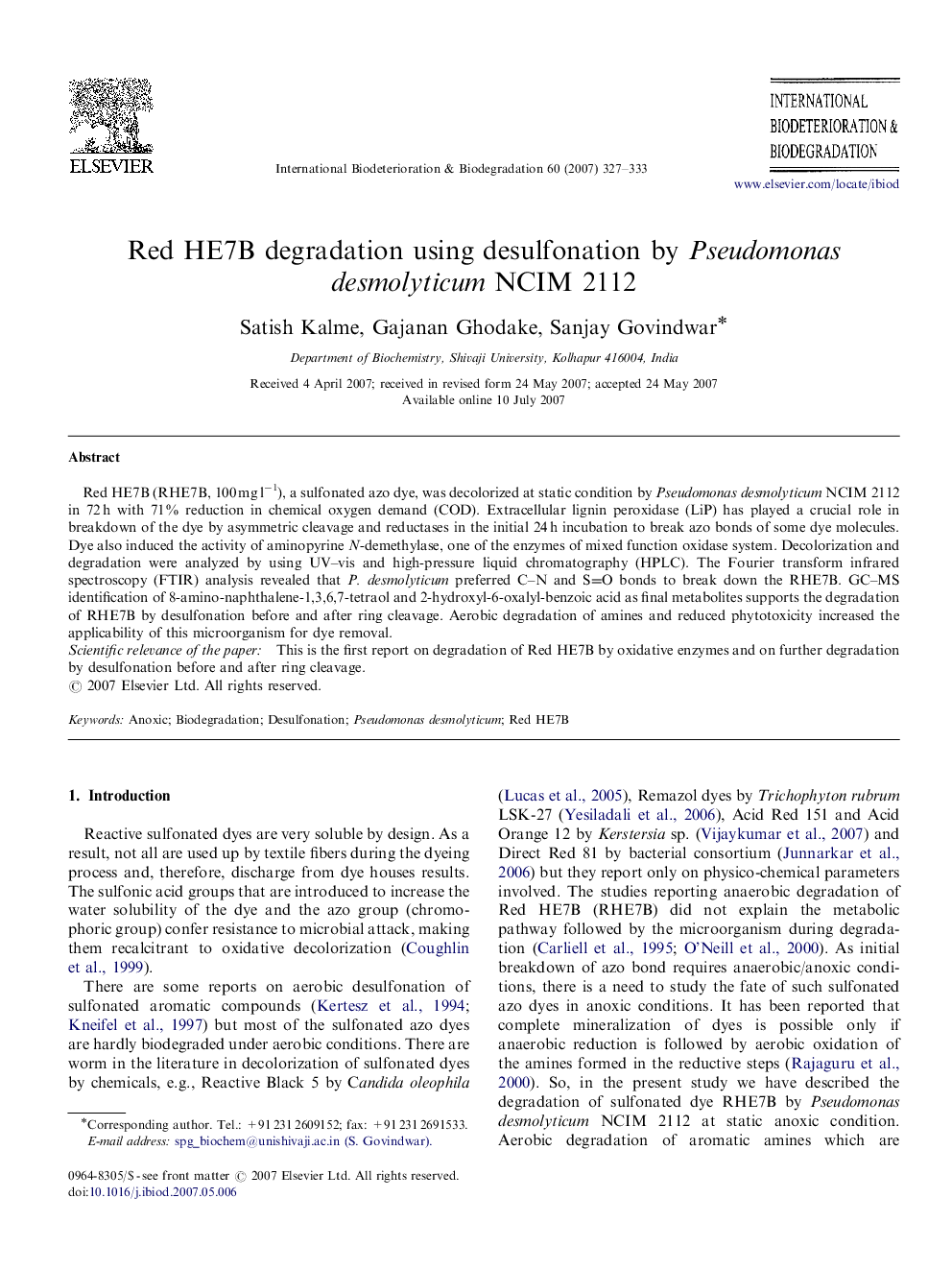| Article ID | Journal | Published Year | Pages | File Type |
|---|---|---|---|---|
| 4365824 | International Biodeterioration & Biodegradation | 2007 | 7 Pages |
Red HE7B (RHE7B, 100 mg l−1), a sulfonated azo dye, was decolorized at static condition by Pseudomonas desmolyticum NCIM 2112 in 72 h with 71% reduction in chemical oxygen demand (COD). Extracellular lignin peroxidase (LiP) has played a crucial role in breakdown of the dye by asymmetric cleavage and reductases in the initial 24 h incubation to break azo bonds of some dye molecules. Dye also induced the activity of aminopyrine N-demethylase, one of the enzymes of mixed function oxidase system. Decolorization and degradation were analyzed by using UV–vis and high-pressure liquid chromatography (HPLC). The Fourier transform infrared spectroscopy (FTIR) analysis revealed that P. desmolyticum preferred C–N and SO bonds to break down the RHE7B. GC–MS identification of 8-amino-naphthalene-1,3,6,7-tetraol and 2-hydroxyl-6-oxalyl-benzoic acid as final metabolites supports the degradation of RHE7B by desulfonation before and after ring cleavage. Aerobic degradation of amines and reduced phytotoxicity increased the applicability of this microorganism for dye removal.Scientific relevance of the paperThis is the first report on degradation of Red HE7B by oxidative enzymes and on further degradation by desulfonation before and after ring cleavage.
